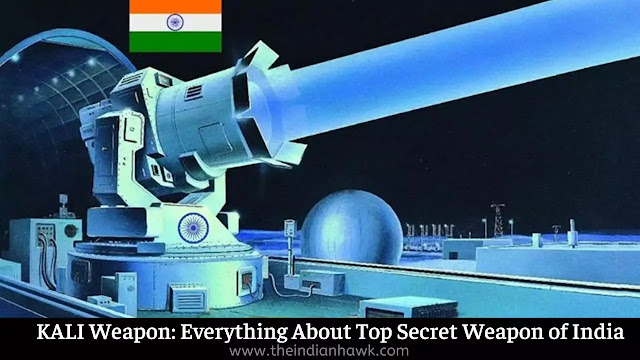Russia's Renewed Su-57E Offer, Strategic Depth for India’s Air Power
A significant geopolitical chess match is unfolding in the skies over India, with Russia making a renewed and aggressive push for the sale of its Sukhoi Su-57E fifth-generation fighter jet. This isn't just a standard arms deal; it's a strategic overture aimed at leveraging India's long-standing ambition for defense self-reliance, known as 'Aatmanirbhar Bharat', and exploiting the procedural quagmire of its ongoing fighter acquisition programs.
 |
| The Sukhoi Su-57E, Russia's fifth-generation multirole stealth fighter, is being aggressively pitched to India. Source - TheIndianHawk.com/Archives |
A Multilayered Proposal: More Than Just a Jet
Moscow's offer of 126 Su-57E stealth fighters is meticulously designed to appeal to New Delhi's strategic goals. The proposal goes beyond a simple purchase of flyaway aircraft. It includes:
- Technology Transfer (ToT): A crucial element that has been a sticking point in India's dealings with Western vendors, particularly with the Rafale deal. Russia is reportedly willing to provide full source code access for the Su-57E's export variant, a powerful incentive that would allow India to integrate its own avionics, sensors, and weapons, ensuring a high degree of customization and strategic autonomy.
- Localized Production: The proposal envisions India as a regional production and support hub for the Su-57E. This aligns perfectly with the "Make in India" initiative and could create a robust domestic aerospace ecosystem, providing a significant boost to local industry.
- Evaluation Access: The offer includes giving Indian Air Force (IAF) pilots and technical teams hands-on access for evaluation, allowing them to assess the Su-57's capabilities and readiness firsthand.
This aggressive pitch comes at a critical time for the Indian Air Force, which is grappling with a declining squadron strength. With legacy aircraft like the MiG-21 being retired, the IAF's combat strength has fallen well below its sanctioned requirement of 42 squadrons.
The Multi-Role Fighter Aircraft (MRFA) program, aimed at acquiring 114 jets, has been mired in delays, and India's indigenous Advanced Medium Combat Aircraft (AMCA) is still in the developmental phase, with the first prototype's rollout and maiden flight still several years away. This creates a significant capability gap that Russia hopes to fill with the Su-57E.
The Geopolitical Tightrope Walk
While the Russian offer is compelling, India's decision-makers face a complex set of challenges:
- CAATSA Sanctions: A major concern is the Countering America's Adversaries Through Sanctions Act (CAATSA). While the United States previously granted India a waiver for its purchase of the Russian S-400 missile system, a new large-scale defense deal could risk triggering these sanctions, particularly under a new or less-accommodating U.S. administration. This is a geopolitical tightrope walk, as India needs to balance its strategic partnership with both the U.S. and Russia.
- Operational Readiness: The Su-57's combat readiness is a subject of debate. While it entered Russian service in 2020, its limited deployment and slow production rate (only around 40 delivered by late 2025) raise questions about its maturity as a platform. The Su-57 has not seen the extensive combat use of its Western and Chinese counterparts, such as the F-35 and J-20, which have been deployed on patrols and in conflict zones.
- Strategic Vendor Balance: India's defense strategy has historically relied on diversifying its military hardware to avoid over-reliance on a single supplier. A massive deal for the Su-57E could tilt this balance and complicate future acquisitions from Western partners.
The Russian proposal, with its focus on phased localization and hybrid acquisition models, is a direct challenge to the Western dominance in India's current MRFA program. It also serves as a strategic counter-pitch, highlighting the perceived shortcomings in technology sharing from Western vendors.
The future of this deal will be a litmus test of India's strategic autonomy. The decision will not only define the future of the IAF's fighter fleet but will also send a powerful message about New Delhi's ability to navigate a complex, multipolar world while pursuing its national interest of self-reliance and regional dominance.
___Article Ends Here___

.png)

.jpg)







